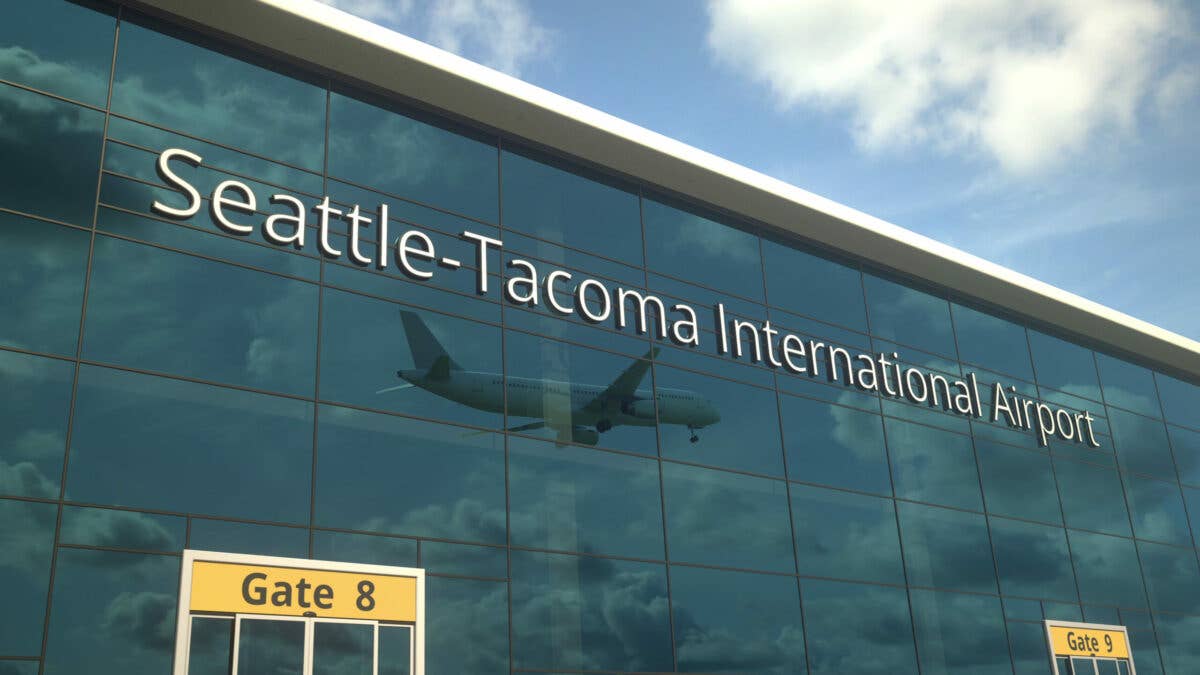Washington State Airport Plan Delayed
Site selection of a reliever field for Sea-Tac has been tabled through a governor veto.

Seattle-Tacoma International Airport (KSEA) is predicted to reach full capacity for travel by 2050. [Credit: Shutterstock]
Washington Gov. Jay Inslee's signing of House Bill 1791, created to study the need for increased commercial aviation services, has not killed the drive to build an airport south of Seattle. But according to Warren Hendrickson, vice chair of the state’s Commercial Aviation Coordinating Commission, "it definitely delays the process, there is no question."
According to Hendrickson, the bill creates a new commercial aviation work group that will consist of 19 appointed voting members. However, the governor vetoed the sections of the bill that provided funding for the group tasked with research and analysis for the section concerning a location for a new airport as Seattle-Tacoma International Airport (KSEA) is predicted to reach full capacity for travel by 2050.
According to Hendrickson, the bill did not do away with the CACC, noting it still has until June 15 to present the Washington Legislature with recommendations for a new airport.
However, he said he doubts a meeting with a quorum can be scheduled before the deadline, adding "the CACC is still in business until June 30, and it will probably take another six months to appoint the 19 people for the commercial aviation work group, and when they stand up, they will have no task or finding."
Hendrickson has been part of the CACC since its creation in 2019. The group looked at 19 potential sites for a reliever airport and never gained public attention until October 2022 when it announced the selection of three "green fields" (areas without airports) as a location.
"These are rural areas in Pierce and Thurston [counties], but they are not undeveloped," he said. "There is no such thing as undeveloped land in Pierce or Thurston [counties]. These are areas with homes and businesses and ranches and farms."
Hendrickson, who has been involved in aviation planning for decades, suggests the average person does not see the potential negative impact of Sea-Tac reaching capacity on the region.
He compares it to an overloaded school, where the parking lots are filled with portable classrooms, the school day is extended to add more classes, and the student-to-teacher ratio is not optimal.
"At that point, parents will say 'we need another school,’" he said.“And if we take no action, are we willing to live with the consequences of that? Are we willing to mortgage the economic future of the area as it could have a negative impact on travel and jobs?"
However, the October 2022 announcement of the three green field sites was met with swift and loud reaction from the community.
Residents in Pierce and Thurston counties raised their voices in protest, citing concerns about traffic, pollution, noise, and negative impacts on quality of life.
The Stop the Airport group launched on Facebook, gaining more than 4,000 members in a mere three weeks. The group has continued to grow and is keeping close tabs on the governor and legislature's actions.
As previously reported in FLYING, the commission looked at the areas near Enumclaw in southeast King County and parts of Pierce and Thurston counties as locations for the reliever field. These areas are rural residential with ranches and farms and country homes. These areas were referred to as “green field” sites by the commission, and in some cases, were without infrastructure, such as roads and sewer lines.
The CACC also ran into opposition from the military, as the locations conflicted with air traffic from Joint Base Lewis-McChord (KTCM), which serves the Army and Air Force, and Gray Army Airfield (KGRF).
The bill was sponsored by state Reps. Tom Dent (R-Moses Lake) and Jake Fey (D-Tacoma). Both representatives' cities have airports.
Moses Lake is the home of Grant County International Airport (KMWH). The airport, owned by the Port of Moses Lake, was an Air Force base during World War II. After the war, it became an aviation testing and training facility. The airport, sporting a 13,503-foot-long runway, also was an alternate landing site for the NASA space shuttles. It has been used extensively by the U.S. military, the Boeing Company, and as a base for Japan Airlines for heavy jet training for its crews. In the 1970s the airport also hosted the supersonic transport (SST) Concorde during its FAA-certification testing. In September KMWH served as the location of the proof-of-concept flight of the Eviation Alice, the all-electric airplane.
Tacoma is the home of Joint-Base Lewis McChord and Gray Army Airfield. Approximately 5 miles west of Tacoma sits Tacoma Narrows Airport (KTIW), built in the 1960s. In the early days of operation, the airport was serviced by commuter operations, but those terminated in the 1970s. Today the towered airport is regarded as an FAA-designated reliever field. It supports brisk corporate traffic and several busy flight schools.

Sign-up for newsletters & special offers!
Get the latest FLYING stories & special offers delivered directly to your inbox






